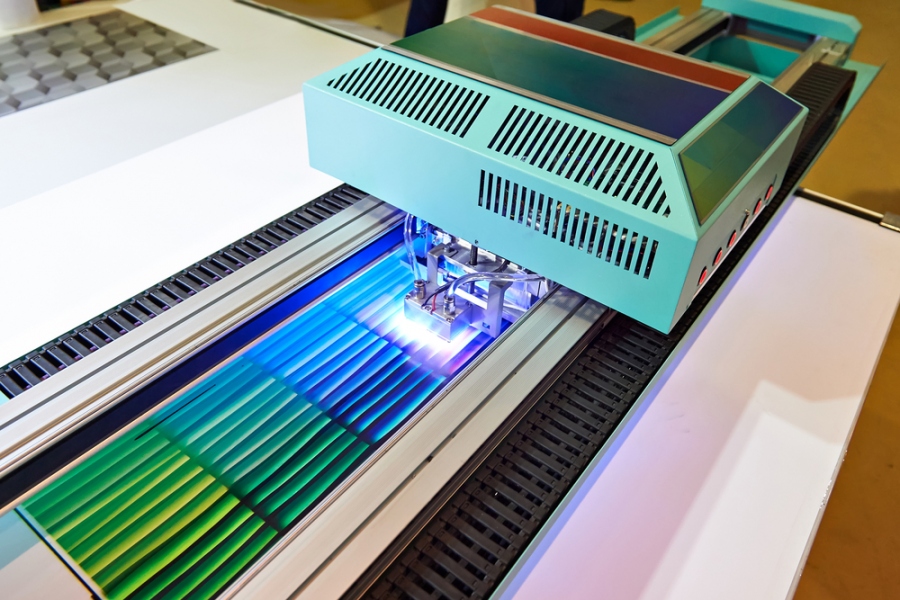Ultraviolet curing refers to a photochemical process that makes use of high-intensity ultraviolet light to dry coatings, inks, and adhesives instantly. UV printing uses this principle to dry printed inks upon its distribution on the substrate or the surface of the material being printed. Application of this technology has several advantages. These include increased production speeds, reduction in rejection rates, an improved scratch and solvent resistance.
However, some UV inks cure faster than others. Each type is formulated to adhere to a specific substrate as well as meet other specifications as required for the application. For this reason, make your right selection for the right application from the best manufacturers in the market.
Science Behind UV Curable Ink
The elemental composition of UV curable ink includes four major components– monomers, oligomers, pigments, and photoinitiators. Monomers are the building blocks and determine the softness or hardness, and flexibility or elongation properties of the ink upon curing. Monomers also control the viscosity of the ink. Meanwhile, oligomers constitute the reactive resins formulated for printing on a particular substrate. And pigments on the other side provide for the color of the ink.
Upon exposure to UV light, photoinitiators help the monomers and oligomers to polymerize. And within no time, the ink hardens. During printing, a specially designed UV light follows the substrate close behind, curing the ink instantly. Unlike the conventional solvent or aqueous ink, UV curable inks do not shrink nor do they produce environmental pollutants. This facilitates improved productivity in less time.
Applications of UV Curing
Since the introduction of UV curing in the 1960s, the technology has found extensive use in the automotive, telecommunication, electronic, and graphic arts among other areas. Originally, UV inks were developed for quickly drying gel polish during the manicure.
Mike Barry, the Fujifilm marketing manager, points out that the ink’s superior qualities expanded the technology into the industrial and commercial markets. With eco-solvent ink suppliers, the UV curing inks have soon found a global application. In fact, they constitute 4% of the industrial coatings market. Additionally, each year there is a 10% growth in this market. The most significant contributor is their environmental friendly characteristics.
Benefits of Using UV Curing
UV curing inks provide excellent physical properties. They include a glossy coat, scratch and abrasion resistance as well as improved bond strength. Furthermore, UV inks reduce setup and clean up labor.
The chemistry behind these inks does not allow curing unless exposed to UV light. They, therefore, can be left overnight without the fear that they will dry in the machine. UV inks have become applicable in the graphics arts printing press because of this particular reason.
Final Thoughts
The fact that printed ink or a dot of the ink dries immediately without a chance to spread out constituted the vastest advantage and the primary reason behind their widespread application. Also, unlike the conventional ink with frustrating cartridges, most of the co-solvent ink suppliers have ink free and high-performance cartridges.








